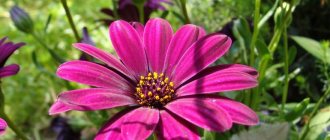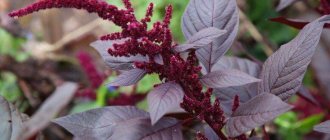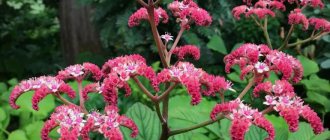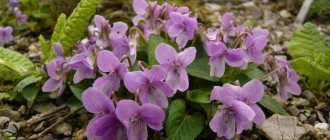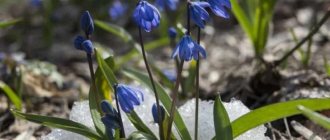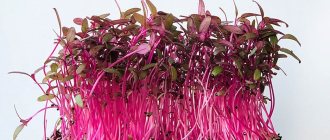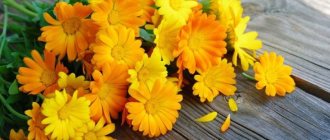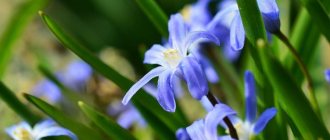A beautiful subshrub with the unusual name camellia, brought to Russia from Japan and the tropical Philippines, looks elegant at any time of the year. The bushes that bloom all season long do not shed their leaves even in winter, they look a little like roses, and vaguely resemble peonies. Regal camellia garden, planting and caring for which in open ground requires special attention, is considered a capricious plant among gardeners. But if certain growing rules are observed, it pleases the owners with lush flowering, delicate aroma and decorative appearance.
Description of the plant
Garden camellia (cameo) is an evergreen flowering subshrub that came to Europe from Japan, China and Korea, where it grows right on the edges of rivers and forests. It gained popularity among landscape designers due to its glossy dark green leaves with pointed ends and large flowers of soft pink, white and purple color. Under natural conditions, bush camellia blooms in winter, when temperatures reach 12°C. Moreover, the buds cover the branches for 2-3 months, sometimes longer.
With proper care, a shrub or tree grows up to 3-10 m, producing flowers with a diameter of 5-13 cm. Each opened bud has 5 petals and many stamens, and does not fall from the branch for a month.
On a note. Camellia is usually grown in the garden only by residents of warm regions, since the tree is quite heat-loving, even hybrid frost-resistant varieties cannot withstand frosts below 20°C. However, if you wish, you can bring the bushes planted in tubs or flowerpots into greenhouses and sheds in the fall and carefully cover them for the winter.
In landscape design, evergreen bushes are used for landscaping and creating unusual garden or park compositions. They are planted both individually and in groups. The garden Japanese camellia, which grows up to 10 m and produces single buds on the tops and axils of the branches, is especially valued by designers. The flowering of this interesting variety is shown in the photo below.
Top dressing
When planting and in the future, it is advisable to add more organic fertilizers to the soil. It is also possible to feed the plant with complex fertilizer.
One “but” - it should not contain calcium and magnesium. Otherwise, when introducing these elements into the ground and watering with tap water, which is also rich in them, you can spoil the composition of the acidic soil necessary for camellia and increase its pH.
Feeding is carried out from the end of May to July. A fertilizer for azaleas (half the recommended dose) or a special one for camellias is perfect. Fertilizers should be applied only after partial watering, then watering the plant again.
Types, varieties
Amateur gardeners and breeders have developed many varieties of garden camellia, numbering about 1000 varieties in the form of subshrubs, bushes, trees of different sizes with simple, semi-double and double flowers of different diameters. However, only 3 types are considered the main ones.
- Mountain (Miyagi). It is a shrub up to 3 m high with dark green ovoid leaves, glossy on the outside, with pubescence at the bottom. The leaves have grooves along the edges and reach a length of 3-5 cm. Flowers with a diameter of about 7 cm are distinguished by their delicate color, tinged with pink, white or reddish. They can be collected in 2-3 buds or bloom singly. Camellia Miyagi blooms from November to January-February.
- Japanese. It often grows as a shrub, but it can also be tree-like, reaching a height of 11-13 m. It has ovoid glossy leaves, sometimes taking the shape of an ellipse, pointed at the edges. Small or large flowers with a diameter of 4 to 12 cm can be collected in groups of 3-4 or bloom singly, delighting the owner with their appearance from December to March.
- Chinese (tea bush). It is an evergreen shrub with erect branches. The leaves of the tea bush are oval-elongated, alternate, dark green, 6-7 cm long. Below they are lighter in color. The fragrant flowers are solitary, appear in August, do not fall until late autumn, and are located in the axils of the leaves. The fruits are woody capsules.
Thanks to the development of frost-resistant, winter-hardy varieties of Japanese camellia, the crop can be grown as a perennial plant in open ground. The most popular hybrids that bloom in spring are the following:
- “Hagoromo” is a shrub with a dense crown and elongated branches, all spring covered with chameleon flowers that change shade from pearl pink to white;
- “Freedom Bell” is an upright tree with dense branches, having red flowers with a delicate coral tint, which tolerates pruning well;
- "Donation" is a slow-growing ornamental shrub with purple-pink flowers with a diameter of 10 cm;
- "Debbie" is a fast-growing species with small semi-double buds of pink-purple color;
- “General Colletti” is a hybrid with variegated flowers of a bright red hue, with white and scarlet streaks on the petals.
In the photo below you can see how different varieties of camellia bloom.
Camellia japonica
Adolphe Audusson
Giardino Schmitz
The use of garden camellia in landscape design
Garden camellia can be used to decorate your own garden plot and to create beautiful compositions.
- This plant looks great when planted alone against a lawn, but in this case it needs some shading.
- You can plant camellia bushes under the shade of large trees and shrubs.
- Alternatively, garden camellias are used as hedges due to their high density of shoots and evergreen foliage.
- Camellia garden can be grown in containers and pots and beautifully placed on the site.
Photo of garden camellia
Garden camellia is an exotic oriental beauty that makes you fall in love with it at first sight, especially during flowering. You can plant this crop on your site, but to do this you must strictly follow all the rules and requirements of the capricious camellia.
Selection of location and conditions of detention
Planting camellias and caring for them in the garden may seem quite difficult to some, because the perennial flower requires proper wintering and does not tolerate severe frosts or close proximity to groundwater. In what conditions should the beautiful cameo be grown?
- Lighting and location. The plant loves diffused sunlight, but the bright rays of the sun are unpleasant for it and can cause burns to leaves and buds. The best option for planting is the western or eastern part of the garden, where there is no wind and strong shade. It is better to plant seedlings on a hill, along fences or walls of a house.
- Temperature. Modern frost-resistant varieties can withstand frosts of 15-20°C in winter. However, in central Russia, bushes require shelter with non-woven material and spruce branches, otherwise the branches with roots will die during prolonged cold weather. In pots, plants can overwinter at temperatures of minus 10-15°C.
- Air and humidity. The bushes do not tolerate strong gusts of wind and drafts, so it is worth providing protection from them throughout the year. In spring and summer it is also necessary to protect crops from drought and overwatering.
- Priming. Cameo prefers to grow in acidic soil. If you use a purchased soil mixture for growing in a tub, the composition for rhododendrons or azaleas is suitable. If the soil is prepared independently, peat, sand, pine litter, humus and perlite are mixed in equal parts. Be sure to add a drainage layer of expanded clay, fine gravel or pebbles to the bottom of the planting hole.
Mistakes of novice gardeners
- Camellia sheds its leaves - very dry soil. Watering time is determined by the condition of the soil; if the soil has dried out by 5 cm, then the plant needs moisture.
- The leaf blade becomes brown, and unopened buds fall off - the shrub is overflowing. In this case, the plant is transplanted into a new substrate.
- The leaves turn brown due to sunburn. The flower grows best on the east or west side.
A capricious plant - camellia
Camellia is an ornamental plant with a long flowering period. It will perfectly complement both your home interior and will be indispensable in landscape decor. In order for a shrub to delight with its flowering, it is necessary to surround it with care and love.
What problems do gardeners face?
How you care for camellia depends on how it blooms. Errors in care are the main cause of plant disease and death.
- If the leaves fall, it means you are making mistakes with watering.
- Withered leaves - the plant lacks nutrients.
- If, as in the photo, brownish spots have formed on the leaves, then remove the pot from the windowsill as quickly as possible. These are signs of sunburn.
- Poor flowering is a sign of soil acidification.
- In case of attack by scale insects, mites or aphids, you need to treat the foliage with special preparations, or with an ordinary soap solution.
The video below clearly shows how to grow camellia and make it the queen of the winter garden. Have you had experience growing camellias? Write about the most important, in your opinion, in this process for readers.
Sources
- https://RoomFlower.ru/komnatnye-tsvety/krasivotsvetushhie/kameliya-yaponskaya.html
- https://pocvetam.ru/sad/kameliya.html
- https://trudogolikam.ru/flora-i-fauna/domashnyaya-kameliya-kak-razvodit-vostochnuyu-krasavicu-v-domashnix-usloviyax.html
- https://pocvetam.ru/komnatnye-rasteniya/kamelia-cvetok.html
- https://rastenievod.com/kameliya.html
- https://agronom.guru/uhod-i-vyrashchivaniya-kamelii-v-domashnih-usloviyah
- https://dom-florista.ru/rasteniya/dekorativnocvetushhie/kameliya/uhod-za-kameliej.html
[collapse]
When to plant
Camellia seedlings are planted in open ground in April, around 15-20. Planting is completed on the tenth of June. They dig up a bed or flowerbed in advance, adding complex compounds in the form of granules. The process of planting from a container into street soil consists of several steps.
- Carefully remove the seedling from the pot, being careful not to damage the fragile roots.
- Place the cutting in the hole where the training material and a layer of nutrient soil have already been poured.
- Sprinkle the roots with soil without deepening the root collar.
- Compact the soil with your palms, water and mulch with sawdust and humus.
- The first week is shaded from direct sunlight, then watered regularly.
Proper soil fertilization
It turns out that the correct planting of garden camellia is not everything for it to grow and bloom. To do this, it is necessary to provide it with suitable conditions, and this is the use of fertilizers that are specifically suitable for plants growing in acidic soil.
Most often, complex formulations with:
- Gray;
- Potassium;
- Phosphorus;
- Nitrogen;
- Microelements (boron, molybdenum, manganese, copper, iron, zinc).
It is not necessary to add fertilizers containing calcium and magnesium, since there is a sufficient amount of them in tap water, and an excess of these elements increases the pH of the soil.
Rules for caring for and growing in the garden
Caring for cameo in open ground when grown outdoors consists of regular watering, fertilizing, pruning and rejuvenating replanting as it grows.
- Watering. In the summer, the cameo is watered abundantly; in the heat, the leaves are additionally sprayed so that they do not dry out. In autumn, watering is reduced so that the roots do not get wet during the rainy season.
- Feeding. In spring and during the summer growth period, camellia is fed 2 times a month with mineral fertilizers or organic matter. The compositions are applied in liquid form immediately after watering. In autumn, fertilization is stopped.
- Loosening, mulching. They loosen the soil a couple of times during the summer, usually after watering. Mulch to protect against weeds and drying out of the soil with spruce litter, peat, dry leaves or sawdust.
- Trimming. Formative pruning of the bush is carried out in early spring in order to ultimately obtain a bush with an even and dense crown. Protective pruning is carried out in the fall; it helps protect the branches from freezing in the absence of snow or shelter.
- Transfer. Young plants are replanted annually, then, after flowering begins, once every 2 years. Transplantation is carried out during the rest period, from October to November.
Preparations for pests/diseases “plus” fertilizing: on the way to a healthy bush
This is not to say that camellia is too susceptible to disease. The only ones are fungal, which can be seen by the leaves: they turn yellow, turn brown, dry out and fall off. Any fungicide for flowers purchased at a specialty store will help here.
Pests rarely bother the shrub, but spider mites and even aphids can be seen during dry periods. The drugs “Akarin”, “Fitoverm” and the like will help in the fight against them.
However, the best remedy for pests and diseases is prevention, which includes not only proper plant care, but also fertilizing. The flower will be grateful for fertilizers that acidify the soil. An excellent solution can be the same fertilizers as for rhododendron.
Camellia goes well with other plants in the garden
Reproduction methods
Cameo can be propagated in two ways:
- seeds;
- cuttings.
The seed growing method is usually used by breeders, planting seeds in containers with nutrient soil, 5-7 pieces each, under film or glass. The process is quite lengthy and labor-intensive.
When propagating by cuttings, young green shoots are cut from the bush (only the tops are taken) and rooted in water or soil. When roots and new leaves appear, the cuttings are transplanted from cups into spacious containers and grown in them for 2-3 years. It’s even easier to buy ready-made seedlings at a garden center to immediately plant in a permanent place.
Transfer
The camellia root system is very sensitive and fragile. This circumstance makes replanting dangerous for the plant. In addition, you need to protect the roots from freezing in winter.
If a transplant is still necessary, it is carried out in early winter, when the camellia is dormant. And the most active growth time for a tree is April and the period from July to September. If you replant the bush during one of these periods of time, its growth will stop. The death of the camellia is also quite likely.
It is recommended to replant young plants every year, and actively flowering plants - once every two years. The soil for camellia requires acidic soil, which contains: coarse sand or finely ground bark, foamed perlite or vermiculite, and peat.
This soil mixture helps to better distribute moisture, protects roots from stagnation of water and rotting, and also allows air to pass through well.

